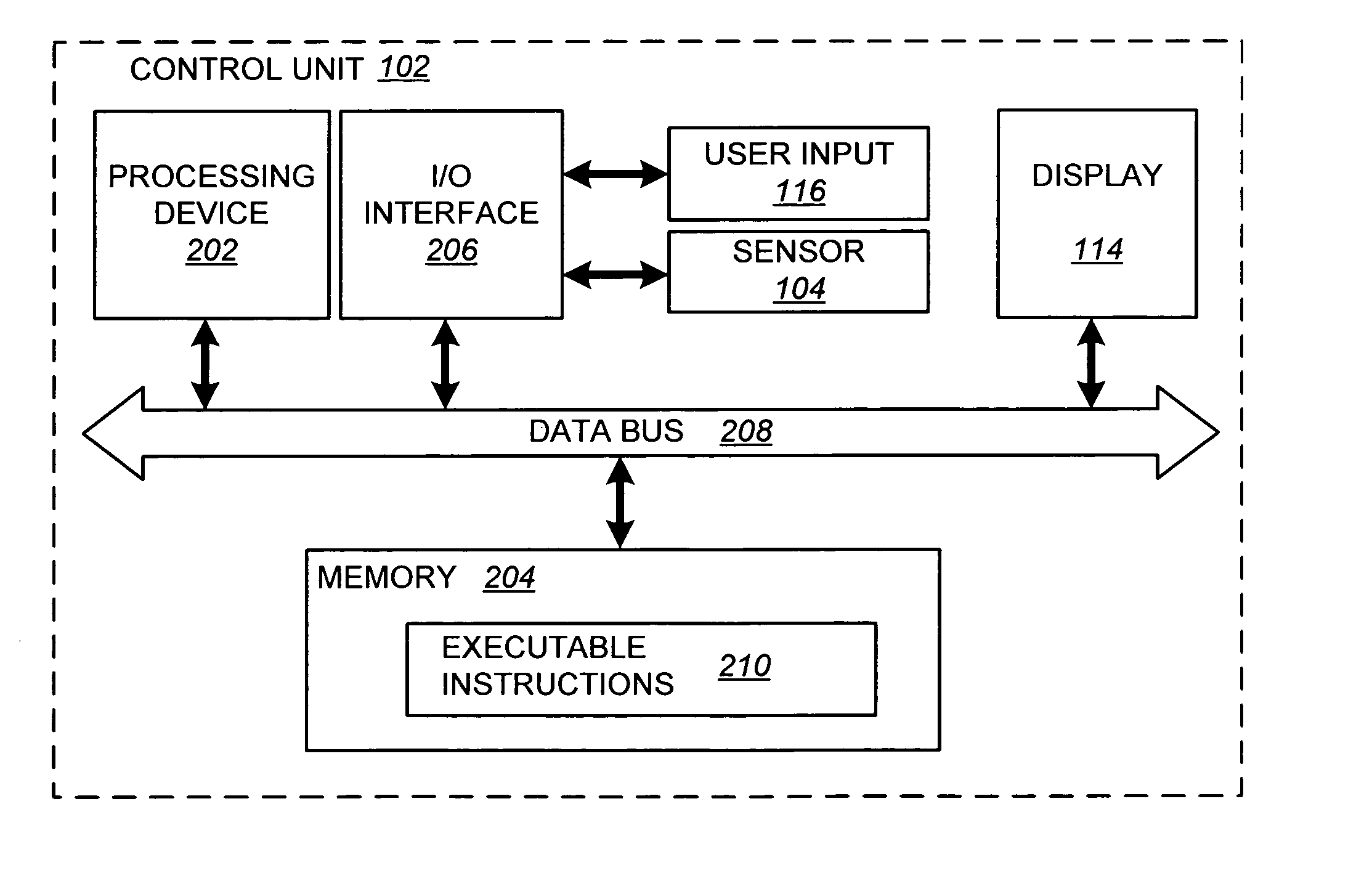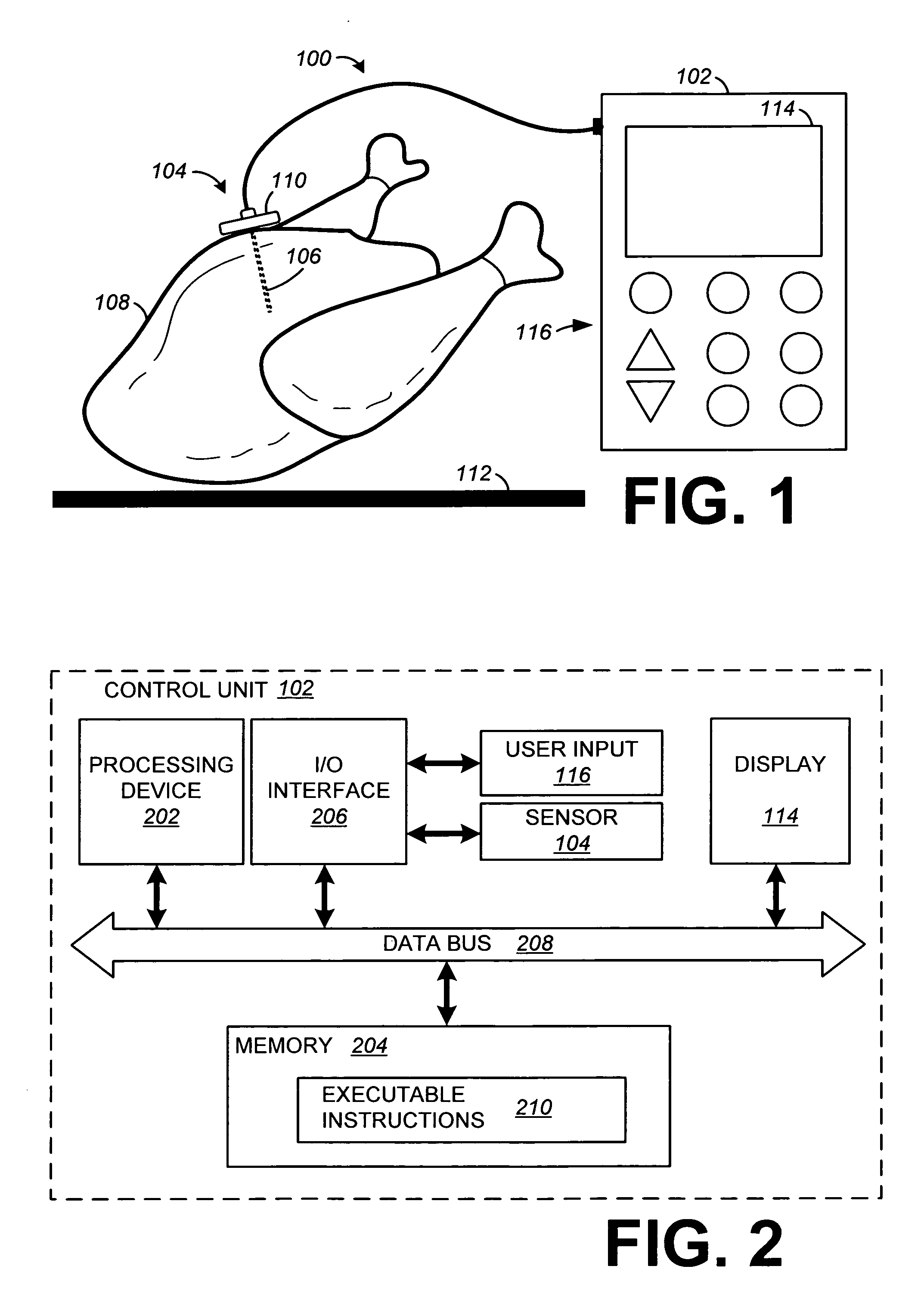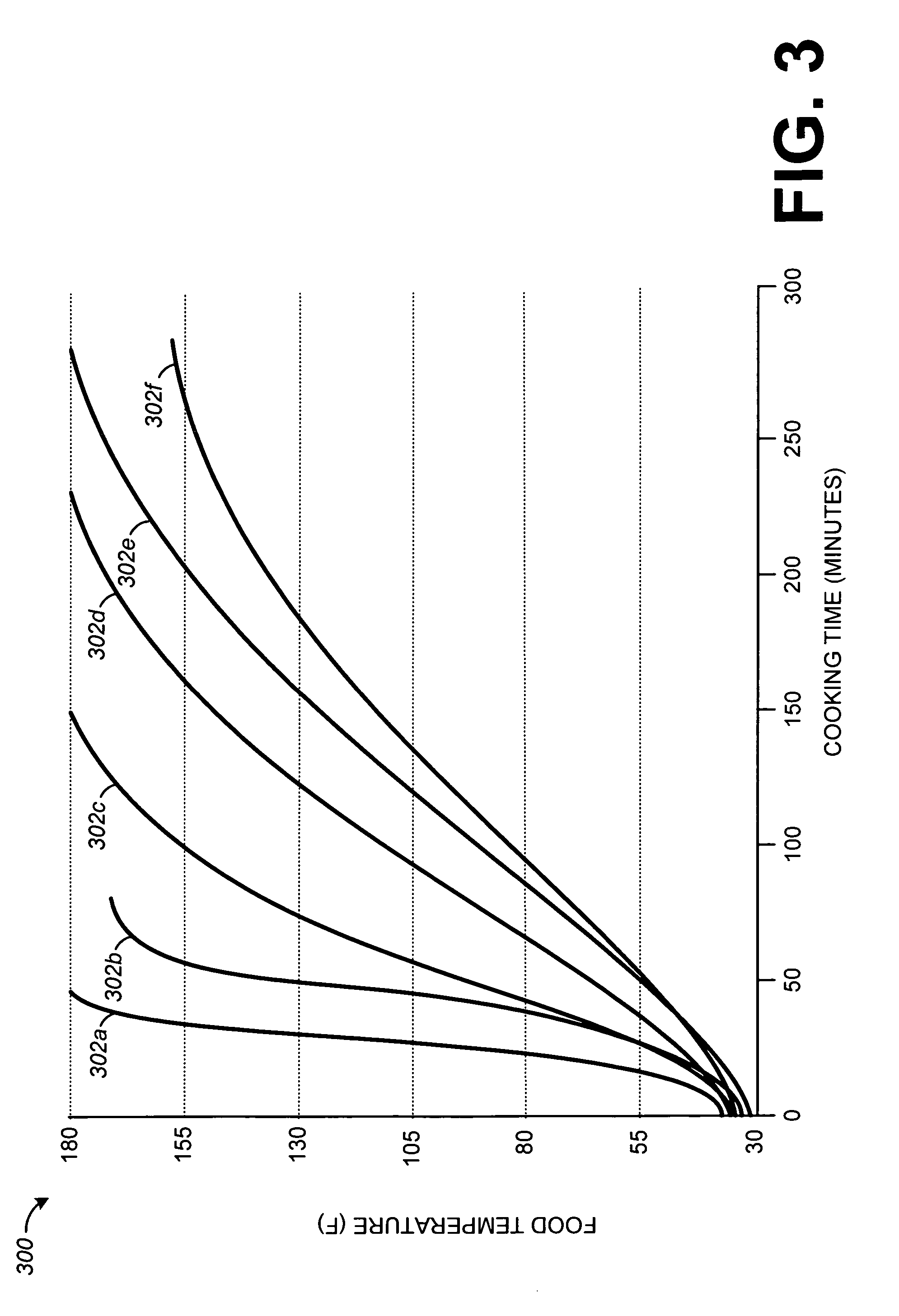Systems and methods for predicting the time to change the temperature of an object
a technology of object and time, applied in the field of predicting the time to change the temperature of an object, can solve the problems of difficult to keep the cooking chamber of a barbecue grill or smoker at a consistent temperature, large cuts of meat often cooked at relatively lower temperatures, and are currently not able to easily and reliably predict the remaining cooking time of food
- Summary
- Abstract
- Description
- Claims
- Application Information
AI Technical Summary
Problems solved by technology
Method used
Image
Examples
Embodiment Construction
[0026] Systems and methods for predicting the time to change the temperature of an object are disclosed. Although the described systems and methods may be particularly described with respect to heating a food item to a desired temperature (i.e. cooking), the disclosed systems and methods can be useful in predicting the remaining time for heating a wide variety of gases, liquids, and / or solids to a desired temperature. Thus, it should be understood that the principles can be applied to a wide variety of other applications in which it may be useful to predict the total time and / or time remaining to heat an object to a desired temperature. As will become apparent, the disclosed systems and methods are particularly advantageous when the physical characteristics (i.e. size, shape, mass, etc.) of the object being heated is unknown and / or when the environment around the object being heated can not be maintained at a constant temperature.
[0027]FIG. 1 depicts an embodiment of a predictive c...
PUM
 Login to View More
Login to View More Abstract
Description
Claims
Application Information
 Login to View More
Login to View More - R&D
- Intellectual Property
- Life Sciences
- Materials
- Tech Scout
- Unparalleled Data Quality
- Higher Quality Content
- 60% Fewer Hallucinations
Browse by: Latest US Patents, China's latest patents, Technical Efficacy Thesaurus, Application Domain, Technology Topic, Popular Technical Reports.
© 2025 PatSnap. All rights reserved.Legal|Privacy policy|Modern Slavery Act Transparency Statement|Sitemap|About US| Contact US: help@patsnap.com



